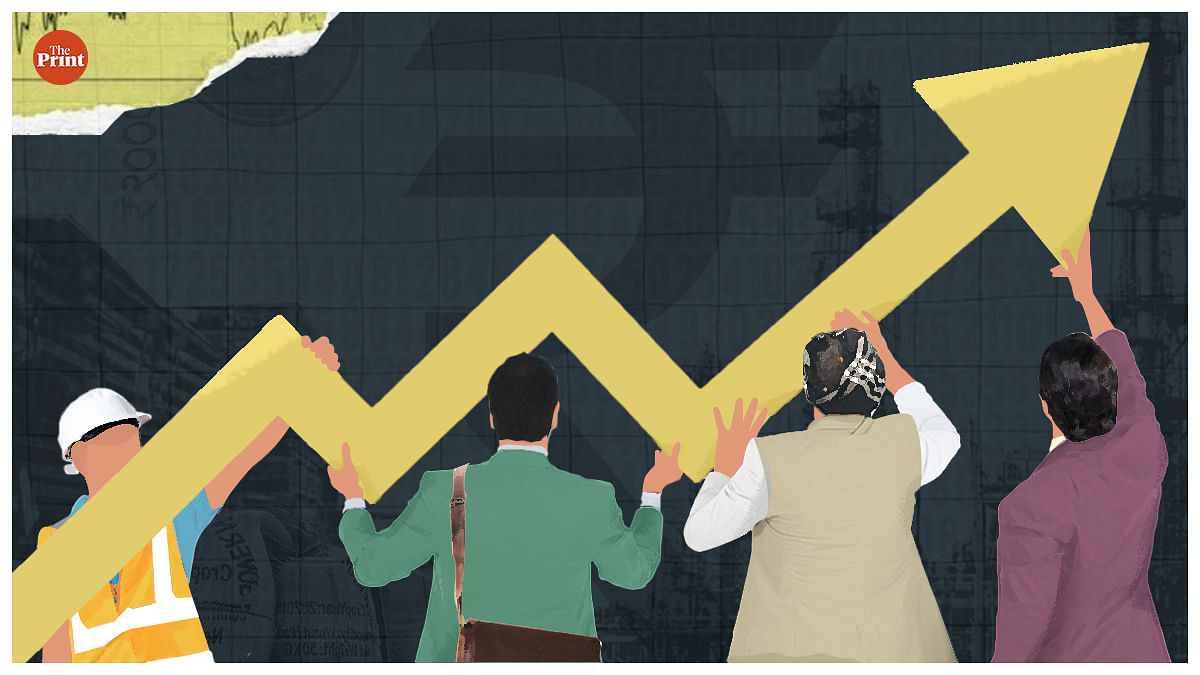
In the past decade, India’s nominal GDP grew 80 per cent to $3.5 trillion by 2022, raising its global share by 1 percentage point to 3.5 per cent of global GDP. Such growth has lifted GDP per capita to $2,500 or by 64 per cent, thanks to government infrastructure spending on the likes of highways and renewable energy, effective disbursement of social welfare programs such as free food to 813 million people, corporate tax cut, and FDI incentives.
The current account deficit (CAD) has narrowed, and capital allocation has become more efficient. India’s external balance has shifted from being fragile to robust, driven by the CAD narrowing and investors’ strong appetite for its assets, which has allowed for the Reserve Bank of India (RBI) to accumulate reserves amounting to 10 months of imports. These positives are felt acutely in India’s financial assets and major city centres but less so in rural areas and with the younger demographic. Jobs, while they increased by 112 million (11.2 crore) during the Modi years, are the Achilles’ heel of India’s development as labour participation remains low and the informal sector dominates.
The question then is moving forward, to address job weaknesses; should India leapfrog to services and avoid manufacturing all together given the challenges of China’s excess capacity and the global drive to decarbonise? This argument asks India and its 1.4 billion (140 crore) people to contend with an economy that underutilises its working-age population. To put that into perspective, despite generating 112 million (11.2 crore) jobs during the Modi years, India’s overall labor force participation rate is still only 58 per cent versus 68 per cent for the Asia-Pacific emerging markets average. Only about 10 per cent of jobs are formal.
By 2030, one out of five working-age people on Earth will be Indian, and India needs to create 115 million (11.5 crore) jobs by 2030 to both absorb underutilised working and incoming labour force. Specifically, the country will need to generate 16.5 million (1.65 crore) jobs per year, up from 12.4 million (1.24 crore) per year for the last decade, and of which, 10.4 million (1.04 crore) will need to be formal jobs. To achieve this herculean task, India’s growth engine needs to fire on all cylinders, from manufacturing to services in the next five years.
Go beyond services
Focusing on services alone will not allow India to tap into its demographic dividend for two simple reasons — the service sector already punches above its weight in India and its absorption scope is limited in terms of headcount and quality of labour. Firstly, service makes up a staggering 55 per cent of GDP in India while manufacturing was 14 per cent in 2023. India service exports are now seventh-largest globally, and telecommunication, computer, and information technology services are second in the world, behind only Ireland.
While there is still room to grow services, especially in other business services exports where India ranks 8th, the sector is rather high-skill intensive and absorbs a limited number of jobs. For example, the entire IT sector employs only 5 million people and if we use ILO 2024 labour report data, then the entire ICT, financial and business service sector employs about 23 million (2.3 crore) jobs versus 63 million (6.3 crore) for manufacturing. The largest employment sector out of agriculture is construction, which is 68 million (6.8 crore). This means that even if India manages to continue to push for growth of service exports, the absorption in quantity and quality (high-skilled) is limited. That is not to say that India should not expand its service export sector but rather that it will need to attract more job growth across all sectors to absorb the 247 million (24.7 crore) workers still toiling in the less productive agriculture sector and for the expansion of the working-age population in the future.
Despite India being second for ICT service exports and having a rising service trade surplus (it has a deficit in transportation service), the country’s merchandise trade deficit suggests that it is not only punching below its weight in goods exports, but it also doesn’t even produce enough for its own consumption and relies on an ever-increasing import from China.
For example, India has the largest working-age population in the world but ranks 19 for manufacturing exports, with only 1.6 per cent of global market share, behind Vietnam’s 2 per cent global market share. Even in labour-intensive manufacturing, India has only 2.7 per cent market share, behind Vietnam’s 5.2 per cent global market share. In 2022 alone, India had a trade deficit of $101 billion with China. Should India contend with its current trajectory of capital-intensive manufacturing exports and high-skilled service exports, leaving behind low-skilled workers? Vietnam experience suggests that India can, at the minimum, tap into low-hanging fruits and compete for firms and countries actively looking to diversify from a China-centric supply chain.
Beyond working to diversify India’s energy supply and build infrastructure to support domestic and foreign trade, the incoming administration needs to jump on the manufacturing train and capitalise on demographic and geopolitical tailwinds. Trade negotiations to expand market access, such as the EU FTA, are underway. And even if the road forward is challenging, it is never too late to walk down the right path.
Trinh Nguyen is a senior economist covering emerging Asia at Natixis. She tweets @Trinhnomics. Views are personal.
(Edited by Prashant)























